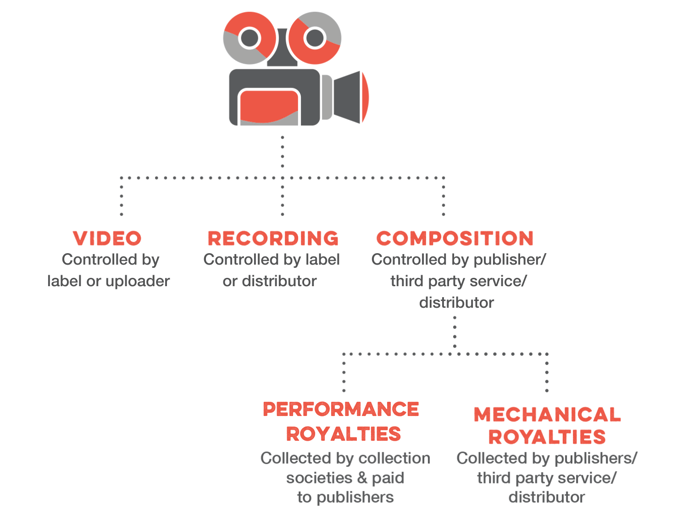How to make sense of micro-syncs.
Unlike the fixed performance royalty payouts of television and radio broadcasts, monetized YouTube videos generate performance and mechanical royalties. The term for this atypical combination of music and moving images is micro-sync royalties. 
The “sync” in “micro-sync” is similar to a synchronization license; the difference being that YouTube hosts multiple uses of a song on a larger scale rather than a single audiovisual instance of a song. YouTube has deals in place with sound recording and composition rightsholders for this very reason: so both parties get paid what they’re due.
As for how everything gets tracked, collected, and distributed, performance royalties are handled by a Performing Rights Organization (PRO) like ASCAP or BMI in North America and a Collective Management Organization (CMO) everywhere else (e.g., GEMA in Germany and SACEM in France). Mechanical royalties are generally overseen by Mechanical Rights Organizations (MROs) like The Harry Fox Agency (HFA) and The Mechanical Licensing Collective (The MLC) in the U.S. — or by CMOs overseas.
In many key territories, Songtrust collects directly from YouTube, which means fewer cuts out of your royalties, faster payments, and quicker resolution of any counterclaims or other issues.
For more information on micro-sync royalties, check out our blog post here.
For more on how mechanical royalties differ from performance royalties, check out our mini-crash course, our blog post breakdown or complete list of mechanical royalty sources.
Thanks for reading. Please rate the article below.
Want to keep up with Songtrust for frequent music and publishing updates?
Follow us @songtrust
Subscribe to our Newsletter
Visit the Songtrust Blog